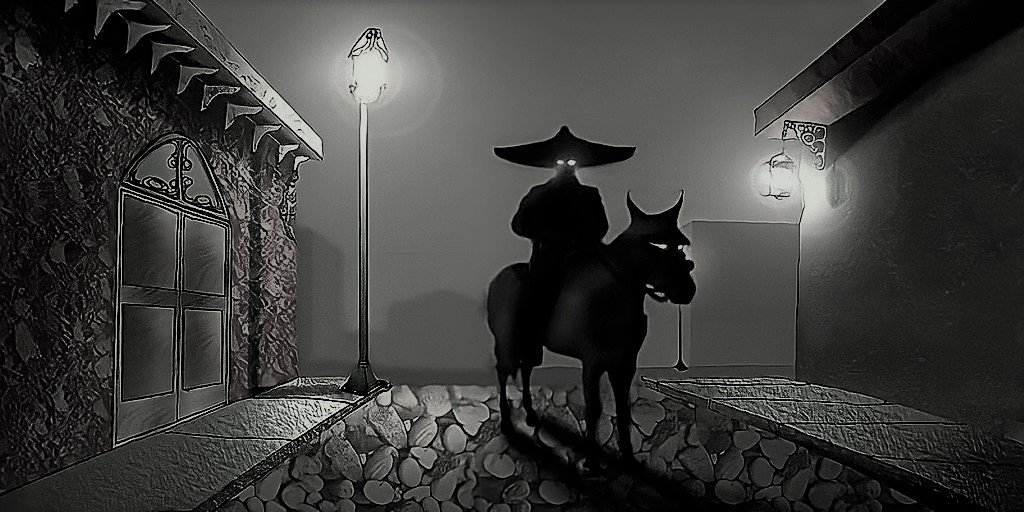The Fiji Mermaid Hoax
Everyone knows what mermaids look like, they’re often depicted as attractive women with a long fishtail lower half. They live under the sea where things are wetter and if you’ve seen Disney’s interpretation of mermaids they often have a Jamaican crab friend.
Though it’s usually accepted that the mermaid mythos evolved from the Sirens of Greek mythology where, apart from being unspeakably beautiful, they were also harbingers of death. The thing is, no one had ever actually seen one, that is until 1842 when one was displayed at the American Museum in New York.
It was an unbelievable attraction since, up to that point, many believed mermaids were the stuff of legends and didn’t actually exist. It brought crowds from all over just to see the majestic mermaid in all its beauty. Luckily we have an drawing of what the Fiji mermaid looked like:
OH HOLY SHIT BURN IT!
As you can probably tell, that shit is fake. But who created it, what was it doing at the American Museum being displayed as real, and what happened to it? Well, strap in because this is a story with multiple cons, a famous entertainer, and a mystery that still leaves us with questions to this day.
Making a Mermaid
The origin of, what would later be called, the Fiji (or Feejee) mermaid goes all the way back to the early 19th century. The story goes that sometime before 1822 a Japanese fisherman caught the mermaid alive in a net and before it died, it warned him of an illness that would make all men in the nearby islands sterile.
The only way to protect every man’s microscopic mermen from sterilization was to carry around a picture of the mermaid. The fisherman set off to save everyone he could by giving them a picture… for a cost.
Yea, it was a scam but, also maybe the entire story was made up? Especially since photography wasn’t really a thing until years later. Either that or some random selfish Japanese fisherman with access to photographic technology really did find the most conceited mermaid of all time.
In reality, the most likely explanation was someone in Indonesia or Japan constructed the mermaid by sewing up pieces of other animals, adding some wire, maybe some paper mache, and calling it a day. It was then placed on sale to swindle some unsuspecting tourists… and it worked like a charm.
Hook, Line, and Sinker
Around 1817 American Sea Captain Samuel Barret Edes purchased the mermaid for $6,000 (around $150,000 in 2022). Apparently, Edes legitimately believed the mermaid was the real deal because being out at sea for so long apparently breaks your brain.
Edes planned on making a lot of money by charging people at various ports around the world to see it. This was a good thing for him since he had to steal the money from his ship’s expense account in order to afford it. By 1822, Ledes hadn’t yet recouped his money and developed another problem, his bosses at Perkins and Company, noticed they were missing 6,000 of something; that something being dollars.
“Maybe he spent it on dire medical- HE SPENT IT ON WHAT?!”
The thing is if you’re trying to be inconspicuous because you stole a lot of money, it’s probably best not to bring attention to yourself. This becomes a problem when you’re trying to bring attention to yourself so you can make money off of a mermaid monstrosity.
Edes was found and sued by his employers not only for the money but also for the mermaid. The judge decreed he had to continue working for Perkins and Company without pay until his offset wages amounted to what he stole. But, Edes was allowed to keep the mermaid for reasons I can only assume were that Perkins and Company saw it and said, “Nah we’re good.”
A few years later Samuel Barret Edes passed away and left his son only one item, the mermaid. Now, I don’t know how many children Edes had but I know which one he hated.
Enter the Showman
In 1842, with no idea what to do with the mermaid, Edes’ son sold it to the owner of the Boston Museum, Moses Kimball. That same year, Moses took the mermaid to his good friend and owner of the American Museum in New York City, P.T Barnum.
If case you don’t know who Phineas Taylor Barnum is, he was a con artist and businessman that preferred to be called a “showman”. Today he’s widely known for his work creating Barnum & Bailey’s circus but despite what the plays, musicals, and movies have you believe, the dude was a dick. And he was always willing to sacrifice his morals to make a quick buck.
For example, in 1835 he used a loophole to lease a paralyzed slave woman named Joice Heth in New York. Next, he spread a bunch of lies claiming she was 161 years old and was the still-living nanny of George Washington.
Barnum and his friend, lawyer, and assistant Levi Lyman then put her on exhibit at various locations. For a price paid directly to them, anyone could meet Joice who, according to Barnum, was confirmed by doctors to be a “relic of by-gone ages”. If that wasn’t enough, after her death a year later, Barnum sold tickets for her autopsy.
Not really sure if he used enough bold letters…
When the doctor performing the autopsy revealed that Joice was nowhere near 161 years old, Lyman and Barnum started a misinformation campaign to confuse the public… but mostly to keep making money.
For the next several months Lyman and Barnum sold contradictory stories to the New York Sun and the Herald on what regarding Joice Heth was actually true. Instead of realizing they had been duped, the newspapers started attacking each other in their articles and Barnum was getting free press.
But how do we know Barnum was only doing this for publicity and money and wasn’t just some opportunistic racist? Well, he was a staunch supporter of the 13th amendment which abolished slavery and was quoted as saying, “without regard to color or condition, all men are equally children of the common Father.” Therefore not racist but morally bankrupt yet financially rich.
“Given the chance, I'd sell my mother twice.”
So, when Moses Kimball brought the mermaid to Barnum, he immediately wanted to make some money off of it. Although first, he had to verify its authenticity, and to his dismay, he quickly found out the mermaid was a fake. Knowing Barnum this wasn’t going to stop him from trying to make a quick buck but he had to take some time to think of a plan.
Related Article: The Facts on The Barnum Effect
The Distraction
A few weeks later while Barnum was presumably still thinking, an interesting article started appearing in New York newspapers that gave updates on other states in the country. Alabama, South Carolina, and Washington all sent updates regarding crops, the latest news, and political gossip, but also about a Dr. Griffin who was on his way to New York City.
They reported that Griffin who was from the Lyceum of Natural History in London had purchased a genuine mermaid, and was now on his way to put it on display in London.
After the articles appeared in the paper, Doctor Griffin and his mermaid checked into an upscale hotel in Philadelphia. Before he left the hotel he offered to show the landlord something incredible. By now you’ve put together that the incredible item was the “mermaid” and after the landlord finished screaming from the horror he told his friends all about it, incidentally, those friends were writers for the local tabloids.
Doctor Griffin started to get offers from multiple venues hoping to let them put the mermaid on display before he left New York City. One of them offers was from P.T. Barnum himself who wanted to display it at the American Museum and obviously charge for admission.
The Diversion and Division
Anticipating that Griffin would say yes to his offer, Barnum launched an advertising campaign of 10,000 pamphlets that described mermaids in general and what he was now calling the “Feejee Mermaid”. Since what the general public thought of mermaids was nowhere near what the Feejee mermaid looked like, and because Barnum already made a name for himself as a hoaxer, he kept his name off the pamphlets.
Which is a good thing because the pamphlets themselves were a bit misleading…
By that, I mean completely misleading.
But when Dr. Griffin arrived in New York City it appeared as if Barnum had jumped the gun, Dr. Griffin refused all offers to display the mermaid. Journalists and some of the general public were hungry to see the mermaid that had been described in their newspapers and in pamphlets all over the city.
Eventually, Dr. Griffin relented but only agreed to show the mermaid to a small group of reporters in his hotel room at the Pacific Hotel. Perhaps it was the attention the mermaid was getting from that small group or maybe it was something else but Dr. Griffin was persuaded to put the mermaid on display on a bigger stage.
The Display and Reveal
Dr. Griffin agreed to display the mermaid at the New York Concert Hall. The price of admission was 25 cents and the show would last only one week but P.T Barnum had other plans.
After just five days, the mermaid exhibition was taken down at the Concert Hall and news got out that Barnum had convinced Dr. Griffin to move the exhibition to his museum instead. During the time the Feejee Mermaid was on display at the American Museum, Dr. Griffin gave lectures on mermaids and referred to dissatisfied visitors as ignorant.
Yet, the mermaid was a hit for the museum, Barnum dealt with long lines every day for the first month and his profits more than doubled. Everything had gone according to plan and yes, I do mean everything because from the moment Barnum discovered the mermaid was fake, he orchestrated every part of its eventual arrival at his museum.
See, Dr. Griffin wasn’t from the Lyceum of Natural History in London, he wasn’t even a real person; Dr. Griffin was Levi Lyman. The letters the newspapers received from Alabama, South Carolina, and Washington were all written by P.T. Barnum. He mailed them to his friends in those states with specific instructions to send them to the papers In New York.
When Levi as Dr. Griffin arrived in New York City, Barnum instructed him to refuse to show the mermaid in order to create more public desire. Dr. Griffin relenting and agreeing to show the mermaid at the Concert Hall was also part of the plan because guess who was renting the Concert Hall through an agent at the exact same time? That’s right, P.T Barnum.
Despite some people realizing the Feejee mermaid was a fake, it had gained so much publicity that everyone wanted to see it for themselves and they were willing to pay Barnum for the opportunity. The entire thing, every step of the way, was a carefully orchestrated hoax that went off without a hitch.
The Disappearance
Unsurprisingly the popularity of the Feejee mermaid died down and at some point in the following years, it disappeared. To this day no one is quite sure what happened to it and there are several copies or ‘inspirations’ of it in other museums.
It’s possible the mermaid burned to a crisp during one of the several fires that occurred at Barnum’s museum but there’s also evidence that Barnum returned it to Moses Kimball at some point. After Kimball's death, his family donated his belonging to the Peabody Museum at Harvard University.
One of the items donated was the Feejee Mermaid along with documentation supporting that it was the original. Casting doubt onto this was the fact that it looked somewhat different to what artists drew for newspapers back while it was with Barnum.
It’s possible it was damaged during a fire or at some other point and someone attempted to ‘fix’ it causing a change in appearance but we’ll never really be sure especially when it was in the hands of one of the greatest hoaxers of the 19th century.
Quick Facts
Originally Sirens were also depicted as male but around the 5th century B.C.E art depicting male Sirens was no longer produced
An x-ray of the Feejee Mermaid from the Peabody Museum showed it contained pieces of bird, duck, and fish bones. Most of it was constructed with wires, nails, and paper mache.

















